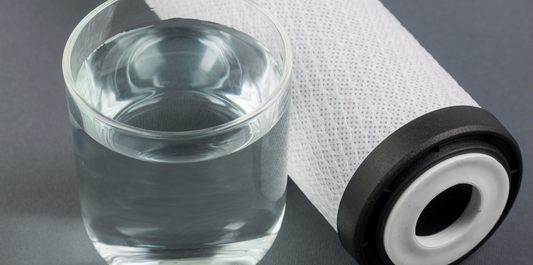Imagine this: you've been carefully growing your own vegetables, keeping chickens in your backyard, confident you're providing your family with the freshest, healthiest food possible. But recent headlines across Europe, particularly the Netherlands, have shattered this comforting idea. Shockingly high levels of PFAS—often called 'forever chemicals'—have been detected in something as simple and wholesome as homegrown eggs.
PFAS everywhere: From eggs to tap water
PFAS (poly- and perfluoroalkyl substances) are synthetic chemicals widely used in products like non-stick pans, waterproof clothing, and firefighting foam. Unfortunately, they're extremely persistent, remaining in the environment—and our bodies—for decades. Recent investigations by the RIVM in the Netherlands revealed alarming levels of PFAS in home-raised eggs. Over half of the tested locations had eggs exceeding safe PFAS consumption limits, with some areas so contaminated that even eating fewer than one egg per week could lead adults to unhealthy exposure levels.
But eggs are just the beginning. The same studies confirm that people commonly ingest PFAS through multiple sources, including drinking water. While the amount of PFAS in tap water alone typically doesn't surpass official health guidelines, the cumulative effect of PFAS from tap water combined with dietary intake can exceed safety limits set by the European Food Safety Authority (EFSA).
The health impact of PFAS
We can never reiterate enough, the serious health risks associated with PFAS. These chemicals—short for per- and polyfluoroalkyl substances—are not only persistent in the environment but can also accumulate in the human body, leading to long-term consequences. The health effects are well-documented by multiple studies and articles, including the U.S. Department of Veterans Affairs.
Cancer
PFAS exposure has been linked to an increased risk of kidney, testicular, and possibly breast cancer.
Reproductive and developmental issues
PFAS can reduce fertility in both men and women and may interfere with fetal development. Studies have associated prenatal PFAS exposure with low birth weights and developmental delays.
Immune system
Exposure to PFAS can weaken immune response, making individuals more vulnerable to infections and reducing vaccine effectiveness.
Thyroid and liver problems
PFAS may interfere with thyroid hormone levels and have been linked to liver damage in both animal and human studies.
Other effects
Some studies suggest links between PFAS exposure and increased cholesterol levels, elevated blood pressure during pregnancy, and additional metabolic issues.
Regulatory actions and ongoing challenges
Recognising the severity of PFAS contamination, various European governments and regulatory bodies are taking action. The European Chemicals Agency (ECHA) is currently reviewing a proposed EU-wide restriction on PFAS to limit their use and emissions. Countries like the Netherlands have also increased environmental monitoring and issued public advisories, including recommendations from the RIVM to avoid consuming eggs from 'hobby chickens' in PFAS-affected areas.
However, due to the persistent nature of these chemicals, eliminating them remains a challenge. Continued vigilance and proactive measures at both governmental and individual levels are critical to addressing this widespread issue.
How safe is your tap water?
According to the RIVM, drinking tap water is still officially considered safe. However, prolonged exposure to even low levels of PFAS can negatively impact health, particularly the immune system. Boiling water does nothing to remove PFAS, and while bottled water generally has lower PFAS levels, it's expensive and environmentally damaging.
Further complicating matters, PFAS concentrations are typically higher in drinking water sourced from surface water compared to groundwater, primarily due to environmental emissions from industries and the use of PFAS-containing products. Groundwater usually has lower PFAS levels, thanks to its slow filtration through soil, but contamination remains an ongoing concern.
AquaTru: An effective solution to remove PFAS

Protecting yourself and your family from harmful substances like PFAS requires effective filtration technology. AquaTru utilises an advanced 4-stage Reverse Osmosis (RO) filtration system designed to significantly reduce contaminants, including PFAS, from your drinking water.
- Robust filtration process: AquaTru removes up to 99% of harmful contaminants, such as PFAS, heavy metals, pharmaceuticals, industrial pollutants, chlorine, lead, fluoride, and microplastics.
- Proven and verified: independent laboratory testing and certifications by IAPMO to NSF/ANSI standards confirm AquaTru’s effectiveness in purifying water.
- Environmentally friendly: by choosing AquaTru, you're not only protecting your health but also reducing plastic waste from bottled water, benefiting both your well-being and the environment
Transparency and reliability: The AquaTru difference
At AquaTru, transparency is central to our commitment. Our detailed performance data sheets provide clear evidence of our filtration effectiveness, ensuring you have confidence in your water quality:
- Total Dissolved Solids (TDS): AquaTru reduces TDS by up to 97%, enhancing taste, clarity, and purity.
- Microplastics reduction: effectively removes over 96% of microplastic particles.
- Optimal pH levels: maintains safe and balanced pH, ensuring healthy and pure drinking water.
Every drop of water you drink should support your health—not threaten it. With PFAS contamination making headlines across Europe, now is the time to act. AquaTru offers a tested, trusted solution that fits right into your home—no complicated installation, no guesswork.
Review our detailed performance data sheet and see how AquaTru stands up against PFAS and other harmful contaminants. 
Make the switch to cleaner water and enjoy the confidence that comes with every sip!





